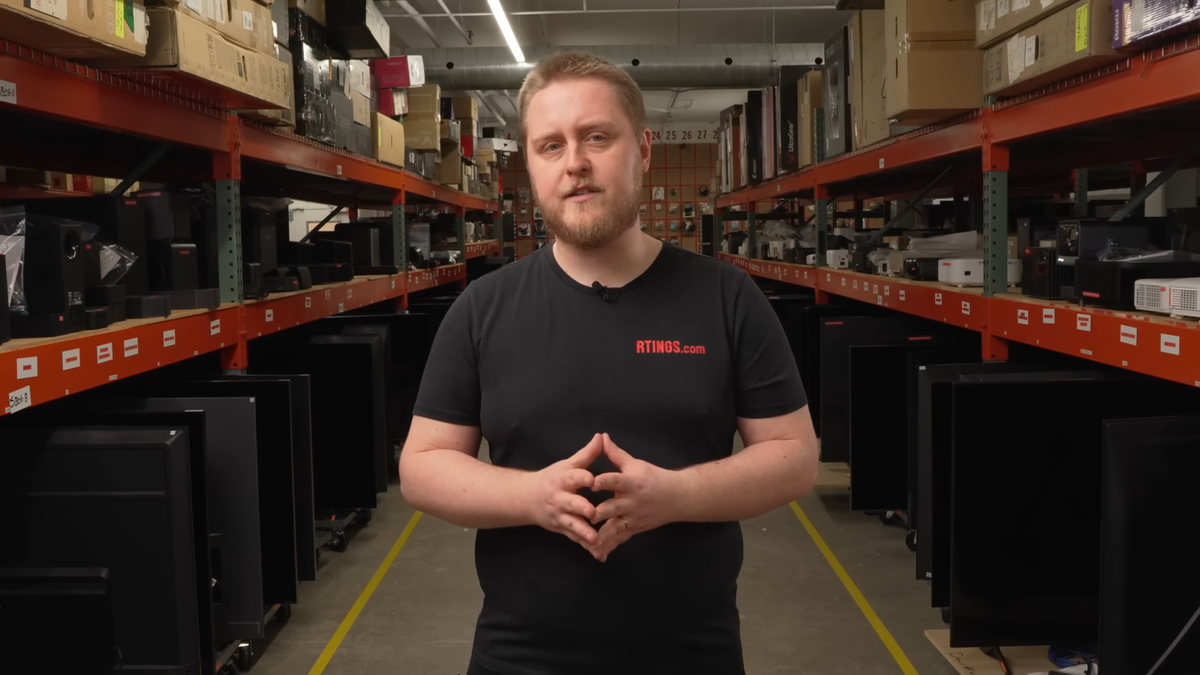Researchers are studying the long-term effects on air, water, soils and surfaces of properties that didn’t burn.
An aerial view of homes destroyed in the Eaton Fire along with lots cleared of debris on March 28, 2025 in Altadena, California. Credit: Mario Tama/Getty Images
This article originally appeared on Inside Climate News, a nonprofit, non-partisan news organization that covers climate, energy, and the environment. Sign up for their newsletter here.
PASADENA, Calif.—Nicole Byrne watched anxiously from across the small kitchen in her home as Parham Azimi, a Harvard University researcher, lined up sample bottles next to the running tap.
As his phone timer chimed, indicating the water pipes had been flushed for the required five minutes, Azimi began filling collection bottles and packing them to be mailed to a lab in San Diego later that day.
Byrne knew it would take weeks to get results back for most of the samples, but she was finally one step closer to answers.
Although her home is nearly two miles from Altadena, one of two communities devastated by the wildfires that broke out in Los Angeles on January 7, the rented bungalow on Loma Vista Street in Pasadena was located downwind of the burn zone.
Byrne, a therapist and mother of two preschoolers, and her husband, Jonathan Hull, a Ph.D. chemist, knew “too much for comfort” about toxic environmental exposure, said Byrne, “but without a good way to get answers.”
Azimi was there gathering water samples as part of an unprecedented academic collaboration led by health, environmental, data, and wildfire risk assessment researchers at Harvard’s T.H. Chan School of Public Health, the UCLA Fielding School of Public Health, the University of California, Davis, and the University of Texas at Austin.
With support from the Spiegel Family Fund, the universities formed the LA Fire Health Study Consortium in late January after the fires killed 29 people, destroyed more than 16,000 structures, primarily in Altadena and Pacific Palisades, and exposed millions to particulate matter, gases, chemicals, heavy metals, asbestos, PFAS, microplastics and other toxic pollutants.
The consortium pledged a 10-year study but also committed to providing Los Angeles with health information in real time, which became critically important after the US Army Corps of Engineers said in early February that it wouldn’t conduct soil sampling after the fires.
Azimi was among scientists studying toxic harms in the burn zone to 50 undamaged homes’ soil, air, drinking water and dust. Others would perform mobile air and surface water testing, monitor firefighters’ health, assess combustible “fuel stocks”—everything from trees and brush to homes, vehicles, fencing, decks and especially anything plastic, in urban and woodland areas—and employ a computer model to estimate how much smoke entered 14 million homes in Southern California.
Joseph Allen, director of the Harvard Healthy Buildings Program at the Chan School and a consortium leader, said university scientists immediately descended on LA even before funding for the consortium emerged. “In these national emergencies, I think all of us in this field feel compelled to do what we can to help,” he said.
Chris Olivares Martinez, an aquatic pollution researcher down Interstate 5 at the University of California Irvine who also became part of the 50-home study, hopes the consortium will serve as a model for academic institutions to build a more collaborative framework for scientific research.
“These disasters are happening so quickly, and they wreak havoc in so many domains,” he said.
Azimi, working in Nicole Byrne’s Pasadena kitchen, labeled and packed his last water sample for shipping back to Harvard. Then he carefully removed two sets of indicator strips from a test kit and dunked them in and out of the final specimen container for 20 seconds before moving on to run a second set of test strips under the tap for another 20 seconds.
When Byrne asked how long the family would have to wait to start getting results back, she was startled when Azimi said the first two of the several hundred water quality tests would be ready in less than a minute.
“The H2S was basically zero, which we’ve seen in lots of homes,” a good sign, said Azimi, referring to a test of hydrogen sulfide that’s intended to detect bacteria of fecal origin.
But among the houses tested so far, Byrne’s had among the highest levels of both free and total chlorine, which typically come from water treatment efforts aimed at disinfecting organic carbon, ash and sediment deposited by the fires.
Although the news was bad—the level was above the 4 parts per million threshold set by the Environmental Protection Agency—Azimi had provided Byrne with her first bit of knowledge to keep her family safe.
From measles in Brooklyn to wildfires on Maui
As an indoor air quality researcher, Azimi, 37, never could have predicted he would be responsible for water sampling here in Los Angeles when he took a research position at the Harvard Healthy Buildings Program back in 2019.
At the time, Azimi’s research was focused on infectious disease transmission models, and he had every expectation it would remain in the lab. But then, just months after starting at Harvard, news broke of a measles outbreak spreading in Brooklyn.
“‘Hey, Parham, just stop everything, clear your table and just focus on measles outbreaks in schools,’” he recalled Joe Allen, head of the Healthy Buildings Program, telling him. “So that was my first response to a crisis, and then quickly after that, COVID happened.”
Azimi was still a little sheepish thinking back on the media circus that ensued in July 2020 when his team published the first credible mathematical model illustrating that COVID-19 was airborne based on data from the Diamond Princess cruise. “Then it was in the New York Times and suddenly it was everywhere,” said Azimi.
And so he has spent the last six years searching for answers in the wake of disasters—after COVID came Hurricane Ida, then Hurricane Ian and then the Lahaina wildfire on Maui.
“All of a sudden, all of these crises happened, and they were all related to indoor air quality,” Azimi said. “It’s kind of defined my research.”
He’s been accompanied throughout these travels by his wife, 37-year-old Iranian-American engineer Zahra Keshavarz, who also works in the Harvard Healthy Buildings Program indoor air quality lab. The couple met as second-year university students in Iran, and have been together ever since, even making it through a five-year long distance relationship when Azimi left Iran in 2012 to pursue his Ph.D. at the Illinois Institute of Technology. The couple were married in 2017, when Keshavarz joined Azimi in Chicago, where he had accepted a two-year postdoctoral position.
Keshavarz spent the next two years working as an indoor air quality consultant at an environmental services company in Chicago. Her experience both testing and analyzing indoor air quality would prove invaluable as she transitioned to the Harvard team.
In January 2022, Azimi and Keshavarz got a National Science Foundation (NSF) Rapid Response Research grant to inspect the mold growth after flooding and hurricanes, less than six months after Hurricane Ida hit New Orleans and then made its way north before deluging Philadelphia, New Jersey and New York City with massive rainfall.
Azimi and Keshavarz did their testing a few months after the hurricane, “so everything was open and dry and clean,” Azimi said. “But in that project, our research focus was on the longer terms of the impacts of these hurricanes. We wanted to show the homes that were affected, even a few months after, still have mold problems.” In total, the couple visited and took samples at 60 homes, spending three weeks in New Orleans and another two in New York and New Jersey.
The winter of 2022-23 saw the couple on the road again, this time in Florida, a few months behind the devastation of Hurricane Ian. With their NSF grant funding expanded by 20 percent, they were able to add an additional 60 test sites in Miami, Orlando and Fort Lauderdale to see the lingering effects of mold growth in Florida’s tropical climate.
Though always cautious, Keshavarz was extra careful during this field excursion, using even higher levels of personal protective equipment than the situation would normally require: she was pregnant with their first child, a daughter they named Alyssa.
Their baby wasn’t even three months old in August 2023 when wildfire swept through Lahaina, devastating the picturesque Maui town and killing more than 100 residents, making it the deadliest wildfire in modern U.S. history. Over the course of the next four months, Keshavarz and Azimi juggled their roles as exhausted new parents and scientists whose research hinged on timely response in a crisis.
The couple arrived in Maui on Jan. 1, 2024, along with several trunks of equipment and their 6-month-old daughter. Keshavarz’s parents came along to care for their infant granddaughter when Azimi and Keshavarz were in the field.
On the ground in LA
The fires were still burning in Altadena and Pacific Palisades when the Spiegel Family Fund invited Allen and Azimi to LA on January 11 to discuss the funding and logistics of the consortium, which was formally announced January 30.
When Harvard’s Chan School issued the press release, an environmental chemistry postdoc was giving Azimi a crash course in water sampling at the utility sink in the garage of his Boston home.
The couple left 18 hours later for LA, arriving on January 31, the day the fires were finally contained. The consortium’s cross-institutional and interdisciplinary design meant Azimi and Keshavarz would have to take soil, air, water, residue, and ash samples at any of the 50 houses enrolled in the environmental exposure study on undamaged houses in the vicinity of the burn zone.
At times they were responsible for sampling for as many as six different labs at four separate universities around the country. Some required multiple types of samples, such as both ash and water, or multiple samples of the same kind collected in different ways or kept in different containers. Altogether, each house required dozens of samples, each taken following the exact methodology required by the lab it would be sent to, which would in turn be subjected to hundreds of tests.
Three weeks into their work, the consortium released its first public data brief, announcing that particulate matter air pollution in Altadena and the Palisades was generally within EPA limits but could vary significantly based on the time of day, direction of the wind, and other atmospheric conditions.
Olivares, the UC Irvine water pollution researcher who often worked side by side with Azimi gathering samples in homes, said in early March that he had been finding much lower levels of benzene and other volatile organic compounds (VOCs) than he had expected—and feared—based on the levels found after the 2018 Camp Fire that destroyed Paradise, California.
This is partially thanks to the hard-won lessons in Paradise, where residents complained for months about the foul odor of the tap water before the water company finally agreed to test and found toxic levels of benzene throughout the water system, Olivares said.
In both the Palisades and Altadena, as soon as the fires were contained, the water companies spent a full week flushing the water lines in an effort to prevent any contaminants from the fires from settling on the bottom of pipes or penetrating into chemically permeable PVC, Olivares said. Only after a full week of intensely flushing the system did the water companies then begin testing at hydrants throughout the burn zone.
But the preliminary results weren’t all so positive. In its second data brief on March 5, the consortium reported that indoor air quality in homes that suffered fire damage can be diminished for weeks. Volatile organic compounds (VOCs) inside damaged homes were four to five times higher than levels outside, and spikes in VOCs and particle pollution could result from cleaning and other indoor activity.
In mid-March, the consortium reported in its third data brief that during the fires, particulate matter (PM) air pollution was elevated in homes that were located more than two miles from the burn area. The scientists recommended monitoring indoor air quality, wearing masks and using air filters.
A bubble in West Altadena
Driving down E. Mendocino Street in Altadena on April 1, Azimi and Keshavarz saw scant visual evidence of the conflagration that came tearing down from Eaton Canyon in January.
They parked their rented Volkswagen Atlas in front of Timothy Bartlett and Tamara Mnoian’s house but struggled to introduce themselves over the deafening clang of heavy machinery as the Army Corps of Engineers worked to clear burned lots a block and a half away.
Bartlett and Mnoian’s home was nestled deep in the burn zone but through a stroke of luck remained standing. The two-story Spanish-style home from the 1920s sits at the edge of a bubble of more than 50 homes that were unburned by the flames that encircled their West Altadena neighborhood.
Bartlett, a film editor in his late 40s, has spent the last four years making the house at the corner of Mendocino and Catherine the perfect home for himself and Mnoian. Late last fall, the couple welcomed a daughter.
Now, in the midst of juggling busy careers and life as new parents, they are having to contend with a highly contaminated house and prolonged displacement to protect themselves.
Bartlett is especially concerned about the exposure risks for their daughter. Before she was born, he spent much of his more than 20-year career in Hollywood alternating between high-paying reality TV editing jobs and science-focused documentaries.
“I’d work the [reality TV] job until I had enough of a cushion that I could say yes the next time someone told me, ‘Look, I have this project. There’s no money, but it means something.’”
Since his daughter’s birth, Bartlett has been prioritizing the relative stability of his reality TV editing jobs, especially since the Eaton Fire has thrown yet another layer of chaos into the mix.
Keshavarz understood his desire for stability. She and Azimi were counting down the days until they could go home to Boston. The family changed hotels six times during their stay in LA, alternating between Santa Monica and Pasadena so they would always be close to one set of test sites.
As Azimi set up the air sampler that would run inside the Bartlett-Mnoian home for the next week, Keshavarz took a turn in the cramped back seat of the Atlas with Alyssa.
Squished between boxes of equipment for the field research team and Alyssa’s car seat, Keshavarz tried to entice her daughter with fruit snacks and goldfish crackers.
“People deserve to know”
Emma Landskroner pulled up to the house on Mendocino just as Azimi and Keshavarz were tucking the last box of water samples into the large cooler in the SUV’s overstuffed trunk.
The couple stripped off respirators and tucked soiled boot covers and gloves into sealed bags to be tossed out later. They had to dash off to the post office before it closed to get the water samples they had taken that day to both the San Diego and Harvard labs by the next morning. The trip out of the burn zone also meant Alyssa would have a few minutes to run around outside without risking exposure.
As Azimi and Keshavarz drove off, Landskroner made her way over to introduce herself to Bartlett and Mnoian. Landskroner, 26, a Ph.D candidate at the UCLA Fielding School of Public Health, works in the lab of Candice Tsai, whose nanoparticle research relies on the use of a sampler she invented that must run for a full week to collect reliable results.
For Landskroner, exposure science is personal. When, despite no family history of the disease, Landskroner’s father was diagnosed with pancreatic cancer in her senior year of college, it motivated her to look more deeply at a future in public health and preventive medicine research.
Between working on experiments for her dissertation and the other research Landskroner does as part of the Tsai Lab, she barely got six hours of sleep a night even before the LA fires forced the evacuation of UCLA. Since the fires, she calls it a win when she gets four hours a night.
Landskroner does a good job of hiding her exhaustion, the only sign a quickly stifled yawn as she zips up her Bruins hoodie. Tall and athletic with her thick dark hair pulled up in a high ponytail to avoid snagging it on the respirator straps, she offered a quick yet warm smile as she double-checked her mask before heading into the house.
“People deserve to know what they are being exposed to, and I have the tools to help them find out,” she said. “We saw after 9/11, even those who weren’t immediately exposed during the building collapse, but months after, the people who just lived in the area during the cleanup, there was heightened cancer mortality among them… Now there’s some interesting studies that everything we’re seeing here is likely comparable to the same particulates and exposures that happened during the World Trade Center.”
Bartlett and Mnoian are similarly serious about the health implications not just for themselves, but for their infant daughter should they return to the house on Mendocino Street.
The couple still doesn’t have a timeline for returning home. They finally got an appointment with an adjuster on their insurance company’s approved vendor list earlier the day Landskroner visited. They still had no idea of how big a gap there would be between what their insurance offered, and the actual price to have their property fully remediated. In the meantime they hoped the consortium could provide some answers, if not about the cleanup, then at least about just how toxic their home was in the wake of the fires.
Landskroner finished setting up the device for measuring nanoparticles, and let the couple know Azimi and Keshavarz would be back to collect the equipment in a week.
“Why?”
Early in April, the consortium released its fifth databrief, which explained that air pollution levels remained higher indoors than outdoors in the days and weeks after the fires, likely due to smoke absorbed by porous surfaces like drywall and soft goods. Scientists recommended that residents run high efficiency particulate air filters and activated charcoal air purifiers before reoccupying fire-affected residences.
“Why wouldn’t a university in Boston try to help out when LA has a crisis?” asked Allen, of the Chan School, regarding Harvard’s involvement in the consortium. “Certainly, we know when Boston has a crisis, our colleagues around the country help us. When New York has a crisis, everyone mobilizes to help New York. If Texas has a crisis, we all mobilize to help Texas.”
“I’m in the field of public health,” he added. “That’s everybody everywhere. So I think it’s natural that we run towards people who need help.”
To Azimi, it is no surprise that a disaster this strange and on this scale in one of the major cultural capitals of the United States sparked such a sprawling and diverse scientific collaboration. Of course everyone felt called to take part.
“LA is the second-largest city in the United States, and this affected millions of people,” said Azimi, who arrived back in Boston with his wife and daughter on April 15. “More recently, we are getting urban fires. And unfortunately, we saw two large ones back to back in the same city.”
The true test of the collaboration will be if it can continue, and if future, more predictable disasters like hurricanes, can generate the same kind of scientific momentum. “The first thing we have to do is put aside our egos and say, ‘No, we are still vulnerable to nature and the power of nature, and we have to consider it seriously,’” Azimi said. “I already have seen this in academia; having all these teams sharing data and resources gives you credibility.”







 English (US) ·
English (US) ·